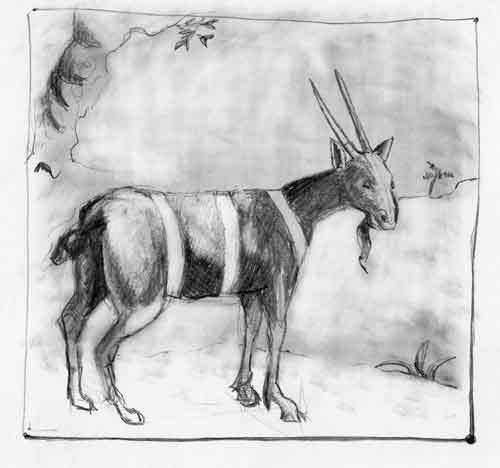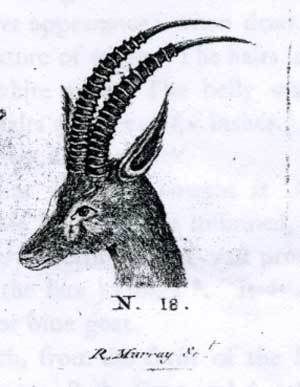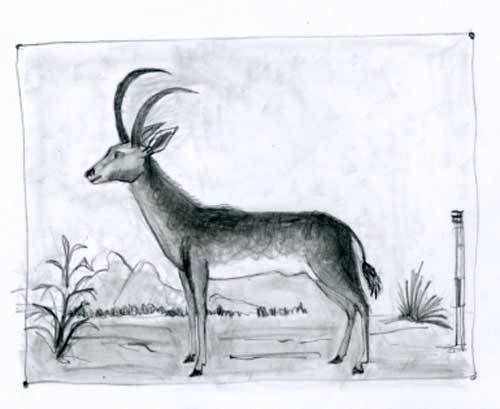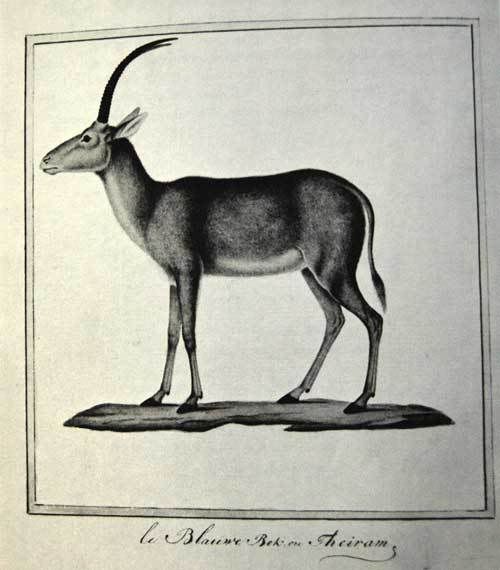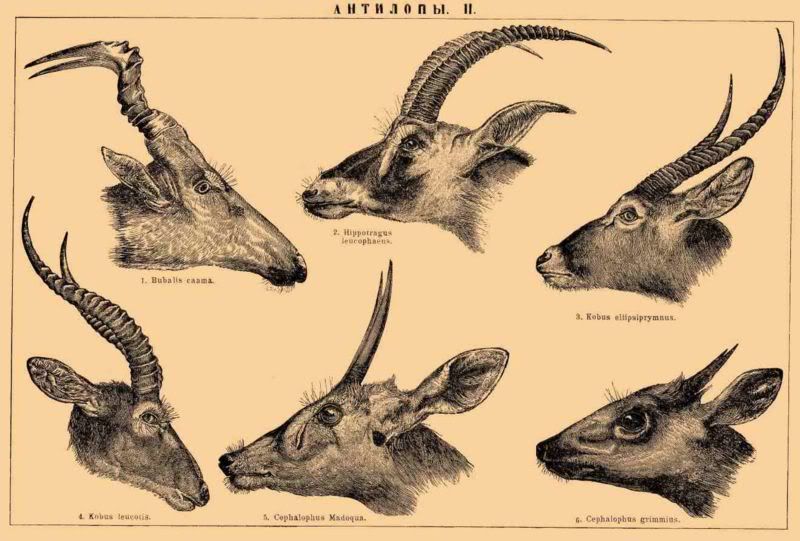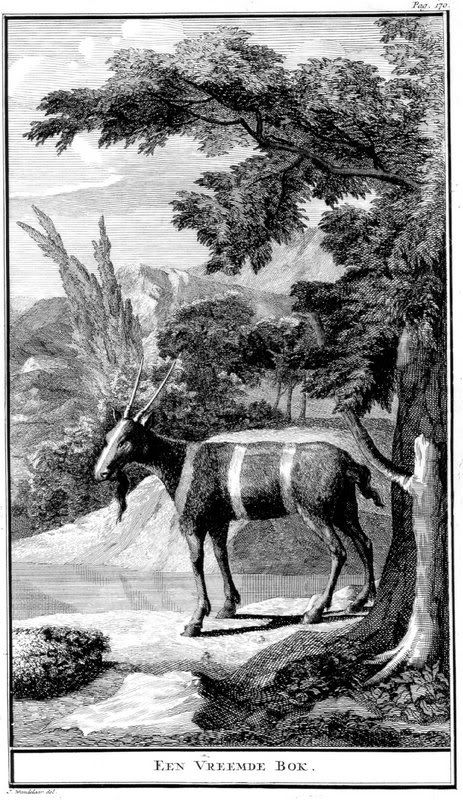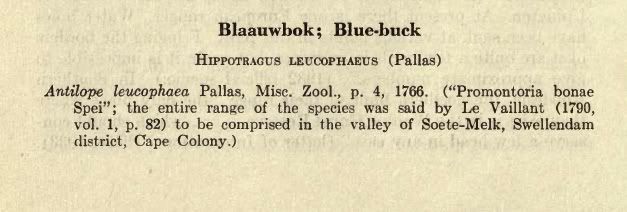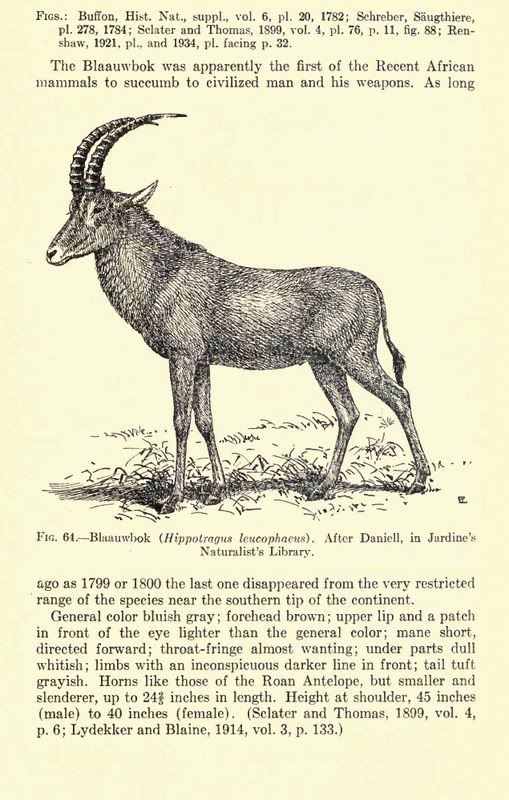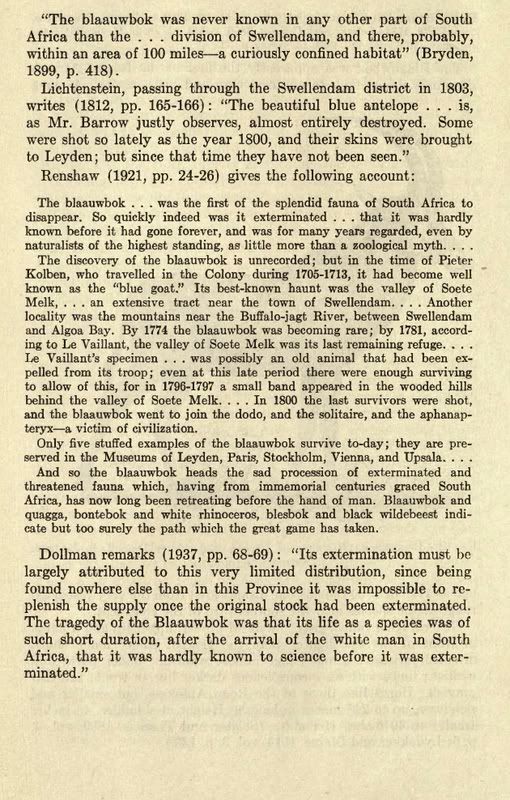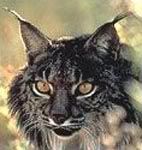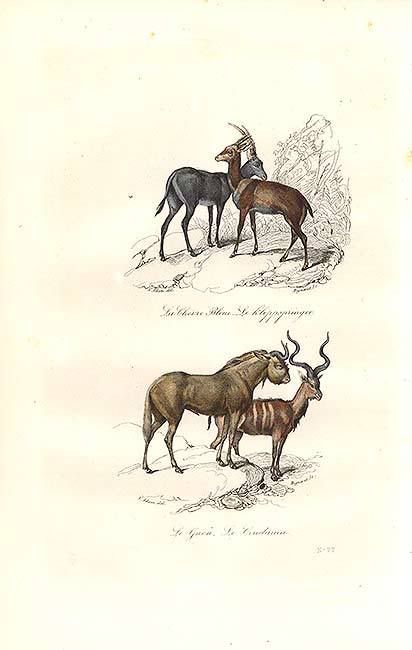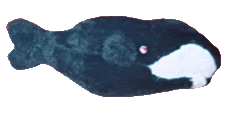Post by another specialist on Aug 10, 2007 21:50:11 GMT
Afterlife - a skull in Amsterdam
In the late 1980s, a Blue Antelope skull was identified by Dr van Bree during a review of the collection of the University of Amsterdam Zoological Museum. This was subsequently confirmed by Bosscha Erdbrink in a publication of 1988, who looked closely at the skull in comparison with other Hippotragus antelope. This is his summary:
It is my subjective opinion that the specimen ZMA 18.623 may very well be a skull of an adult, middle-aged, male specimen of the Bluebuck. As there appear to be no data on the provenance of the specimen in the collection, it is only possible to surmise that is might have belonged in some Dutch private collection before it came into the possession of the Zoological Museum of Amsterdam University. Quite possibly it could have formed a whole with one of the "plurimas pelles" [several skins] of the Blaauwbock mentioned in Pallas' original description of 1766, which he inspected during his second stay (1763-1767) in Holland. He visited many private collections, such as that of Dr Klockner of Amsterdam, who also possessed the type specimen now in the RMNH collection at Leiden (Husson and Holthuis, 1969, p152).
Some further details are given by Rookmaker (1992) of its classification, and also of its possible object history. This skull is thought to have been part of the historic Teylers' Museum collection in Haarlem and to have come to Amsterdam in 1866.
The skull is housed in a building that stands six metres below sea level, a short distance from the port where the Dutch East India Company operated in full strength in the eighteenth century. It is next to Amsterdam Zoo, Artis, which has links to the university. The university collection includes a mount of the last living quagga, that died in the Zoo, and also a mounted Cape Lion. Both these animals came from the Cape of South Africa and became extinct after the Blue Antelope.
This skull was subsequently compared with the "Glasgow" specimen by Groves and Westwood in 1995, who concluded that both skulls were more than likely to have once been living female Blue Antelopes. The "Amsterdam" skull is slightly smaller than the “Glasgow” skull. It has horn sheaths, which are worn on the front. There are gaps between the teeth on the lower mandible which also has an abcess in the bone from a diseased tooth. According to Erdbrink:
"It can be seen that the poor individual has suffered a most painful [relatively] long lasting suppurating (traumatic?) infection of the left half..."
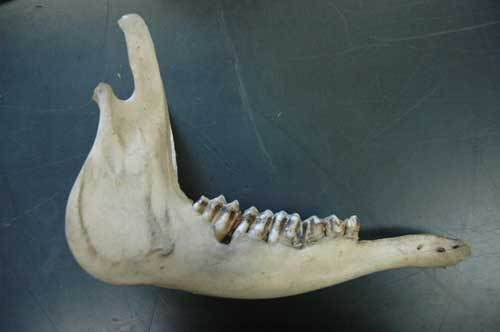
Amsterdam skull lower mandible Amsterdam Skull
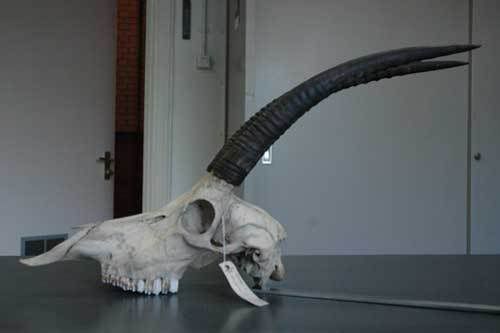
"Amsterdam" Skull - lower jaw "Amsterdam" skull
Images © University of Amsterdam Zoological Collection / Kate Foster
www.blueantelope.info/?q=node/21
In the late 1980s, a Blue Antelope skull was identified by Dr van Bree during a review of the collection of the University of Amsterdam Zoological Museum. This was subsequently confirmed by Bosscha Erdbrink in a publication of 1988, who looked closely at the skull in comparison with other Hippotragus antelope. This is his summary:
It is my subjective opinion that the specimen ZMA 18.623 may very well be a skull of an adult, middle-aged, male specimen of the Bluebuck. As there appear to be no data on the provenance of the specimen in the collection, it is only possible to surmise that is might have belonged in some Dutch private collection before it came into the possession of the Zoological Museum of Amsterdam University. Quite possibly it could have formed a whole with one of the "plurimas pelles" [several skins] of the Blaauwbock mentioned in Pallas' original description of 1766, which he inspected during his second stay (1763-1767) in Holland. He visited many private collections, such as that of Dr Klockner of Amsterdam, who also possessed the type specimen now in the RMNH collection at Leiden (Husson and Holthuis, 1969, p152).
Some further details are given by Rookmaker (1992) of its classification, and also of its possible object history. This skull is thought to have been part of the historic Teylers' Museum collection in Haarlem and to have come to Amsterdam in 1866.
The skull is housed in a building that stands six metres below sea level, a short distance from the port where the Dutch East India Company operated in full strength in the eighteenth century. It is next to Amsterdam Zoo, Artis, which has links to the university. The university collection includes a mount of the last living quagga, that died in the Zoo, and also a mounted Cape Lion. Both these animals came from the Cape of South Africa and became extinct after the Blue Antelope.
This skull was subsequently compared with the "Glasgow" specimen by Groves and Westwood in 1995, who concluded that both skulls were more than likely to have once been living female Blue Antelopes. The "Amsterdam" skull is slightly smaller than the “Glasgow” skull. It has horn sheaths, which are worn on the front. There are gaps between the teeth on the lower mandible which also has an abcess in the bone from a diseased tooth. According to Erdbrink:
"It can be seen that the poor individual has suffered a most painful [relatively] long lasting suppurating (traumatic?) infection of the left half..."

Amsterdam skull lower mandible Amsterdam Skull

"Amsterdam" Skull - lower jaw "Amsterdam" skull
Images © University of Amsterdam Zoological Collection / Kate Foster
www.blueantelope.info/?q=node/21


